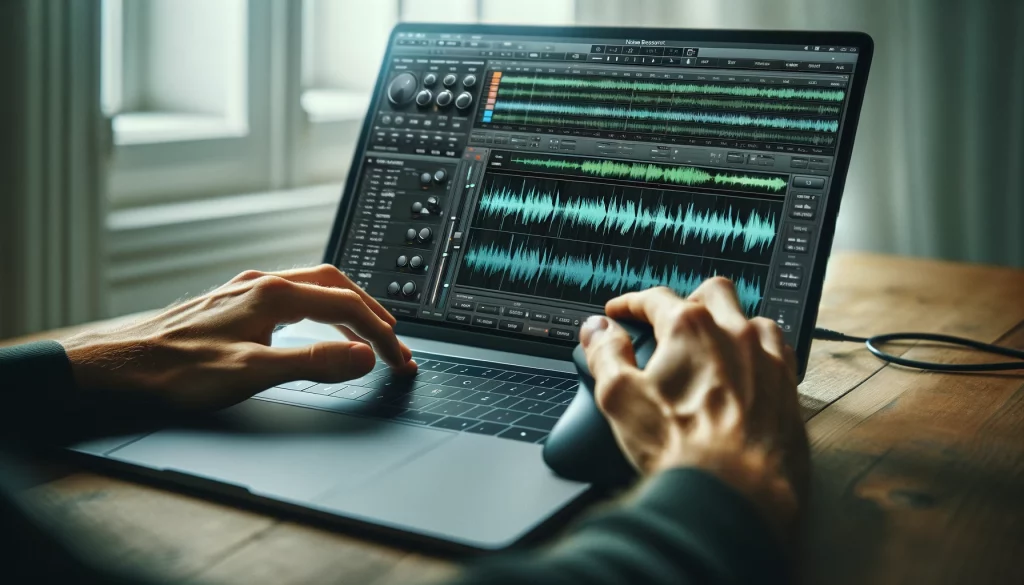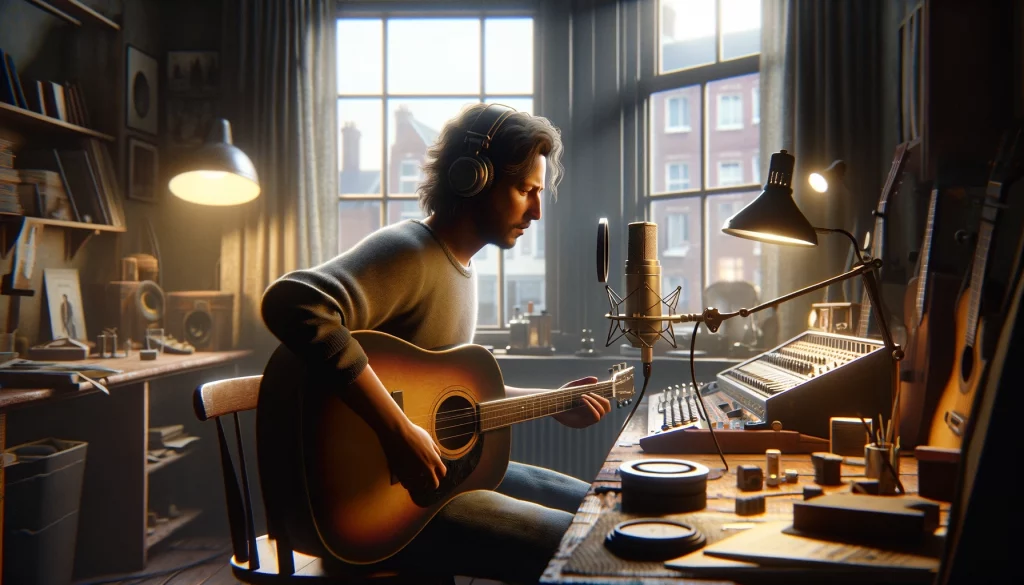In the past few years, the internet has become a lively place for singers and acoustic artists to show their skills to people worldwide. Audio quality has become an essential part of keeping people interested and making a show more powerful emotionally and resonantly. The sound must be clear and pure for people who sing acoustically or send in voice records for contests and auditions. Because of this, the noise remover is helpful for singers who want to make their tracks sound better. These tools are made to eliminate chatter, noise in the background, and other sound flaws that can take away from the genuine appeal of the voice and the performance. The tool ensures that the focus stays on the artist’s voice and the subtle expression of their music by improving the sound quality. Maintaining high-quality sound is crucial for sticking out and connecting with an audience on digital platforms, where listeners can instantly switch if they’re disappointed.
What Is A Noise Remover?

A noise remover, additionally known as a sound reducer, is an advanced tool that uses AI to eliminate background noise you don’t want in recorded or downloaded audio files. It uses machine learning techniques to differentiate between speech and background noise, analyzing and processing audio in seconds.
The AI inside the noise remover is trained with large sets of audio files that include a wide range of noises and speech samples. This training gives the AI the skills to tell the difference between noise and the music to be played. Once the AI finds the noise, it uses different filtering and methods to separate and eliminate the annoying sounds while keeping the main audio’s quality mostly the same.
The audio noise reduction tool also has a microphone built-in so that users can record their voice straight from the gadget. This feature is beneficial for making clear recordings while you’re on the go. It’s useful for podcasters, artists, and anyone who needs to make clear recordings in noisy places.
What makes an acoustic singer use the noise remover?

Musicians and audio professionals may not detect or be able to manually remove minor sounds from recordings owing to human perception and manual editing time. , on the other hand, can find and eliminate these kinds of noises more effectively. Here are some examples of things that are hard to notice or hard to get rid of but that AI noise remover can handle well:
Low-Level Background Noise:
AI can pick out and get rid of background noises that are always there, like the hum of air conditioning, the buzz of lights, or the white noise from electronics, even if the sounds are so faint that they fit in with the rest of the sound.
Noise Interference:
Noise interference from electrical sources, like RF (Radio Frequency) interference, can cause clicks, pops, or buzzes that aren’t always there or are hard to hear. The AI sound reducer can find these short-lived noises and get rid of them without changing the sound that you want to hear.
Microphone Handling Noise:
Because it happens all over the place, handling noise, like the soft rustling sounds that occur when you move or touch a microphone, can be hard to find and get rid of by hand. AI can look at these sounds’ properties and separate them from the sound content meant to be played.
Subtle Digital Artifacts:
Recording or handling digital audio can create artifacts such as quantization noise or very light digital clipping. People can’t always hear these glitches, but the noise remover that looks at digital sounds on a detailed level can find them and eliminate them.
Reverb Tail of Low-Level Sounds:
When there is a lot of natural reverb in a recording, the tail end of reverb from quiet sounds can blend in with the background noise, making it hard for people to tell them apart and get rid of. AI can find these echo tails and cut them down, which makes the sound more transparent.
Breath Sounds and Lip Smacks:
Removing audible breaths by hand is possible, but it is easier to miss lower breath sounds and mouth noises like lip smacks or saliva sounds. The audio noise reduction that removes noise can find these unique sound patterns and make them less noticeable.
String and Fret Noise:
On stringed instruments, it can be hard to eliminate the small noises made by fingers moving across strings or by random fret noise without changing the tone of the notes. The noise or sound reducer can pick up on these sounds even when they happen simultaneously as acoustic notes.
Is the noise remover easy to use?
Noise remover’s one-click audio noise reduction may surprise you. How let’s see the process:
First, you need to open the noise remover app. If you do not have the app, download it from the Play Store. Additionally, the app provider InverseAI offers a web version for noise reduction. Furthermore, the app provides Mac and IOS versions for Apple users.
The second step is to upload the file you want to denoise or clean. If you are a new user, adjust your device’s app settings and upload your file.
Now, click denoise. It will take a few seconds to finish the denoising process.
Please check your denoised file. Also, you can compare the denoised and noisy files by playing the original audio. However, there is an output option where you can find your denoised or processed file.
Now click the save button and choose your desired format.
Lastly, Enjoy your denoised professional-level audio!
Is Noise Remover Premium or Free?
Our AI Noise Remover provides free, superior audio cleanup. Feel free to use premium features that usually cost money elsewhere. Our free version is very useful, but it’s backed by ads like other tools. Our paid version is the best choice if you want to have a smooth experience. We priced it carefully to make it affordable and give a peaceful, ad-free environment. So, You don’t have to back down due to cost. We aim to refine your work to make you famous!
Conclusion
If you sing acoustically or perform cover songs, a noise remover can help your tapes sound natural without autotune. It eliminates background sounds that some may not notice but make the music seem clearer. It’s a magic wand that eliminates anything annoying from your recording, leaving only your voice and instrument. A good noise remover is easy to use and effective, unlike other tools. Try it and discover how it may make your song seem like a studio recording with all your enthusiasm.
FAQ
Does AI noise removal affect the quality of acoustic recordings?
It doesn’t affect the primary recording or speech. It was only useful for cleaning up background noise and keeping the main sound separate.
Are there limitations to using AI noise removal for acoustic singers?
The tool has no restrictions. However, audio noise reduction only works for post-production and post-recording.
How do I choose the right AI noise-removal software for acoustic recordings?
AI noise removal software should be chosen based on pricing, ease of use, noise reduction, and reviews.
Does noise remover work in live performances?
No, unfortunately. The gadget cannot be used during live streaming or performances. But our dedicated dev team is working on it so you can have the functionality soon.
Does noise remover need technical expertise to use it?
Surprisingly, it doesn’t require any technical skills. Anyone, from experts to complete newcomers, can use this tool.


